Part 15, March 26, 2021 - Artificial Intelligence and art (Reading time: 2 minutes)
Sylvette David, a young woman from Paris, spends the summer of 1954 vacationing with her mother in Vallauris on the Côte d’Azur. She often visits friends living in the small town, and, from their house, one day she sees a drawing hanging across the wall that enclosures the neighbor’s house. The drawing shows a girl with a blond ponytail. She looks like her.
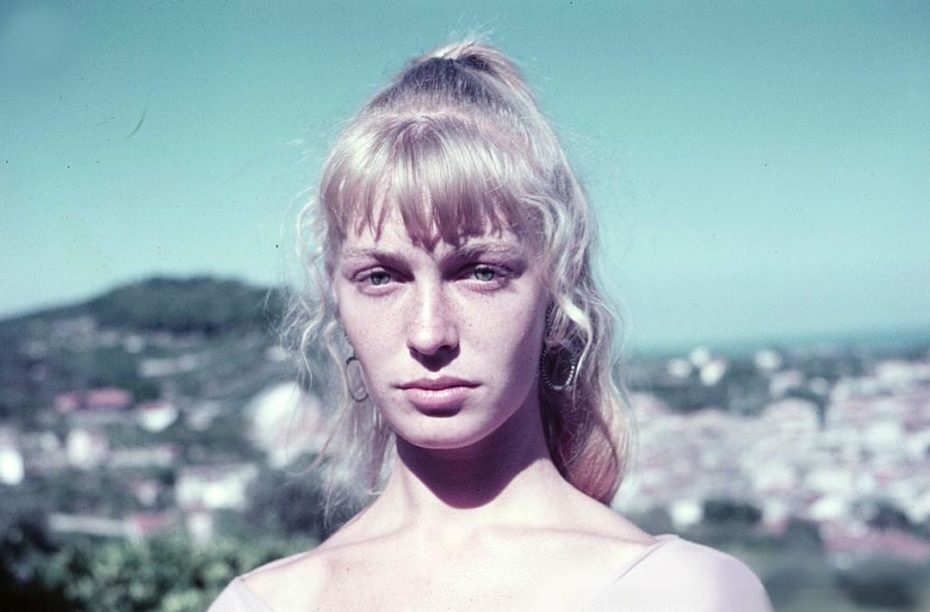
Pablo Picasso, nearly 73 years old to that time, had noticed her on her daily walks for quite a while. But he doesn’t dare to approach her. Finally, he draws her from his memory and pins the picture outside the wall in a way that the girl must find it. Sylvette is impressed, she overcomes her concerns and speaks to the painting genius of the 20th century.
From now on, the 19-year-old is the painter’s model, almost every day of the summer. There is different information about the definite number, but surely around 50 Sylvette pictures form in these days, mostly black-and-white drawings, another part is colored. They all have the unpretentious title “Une jeune femme” (A young woman).
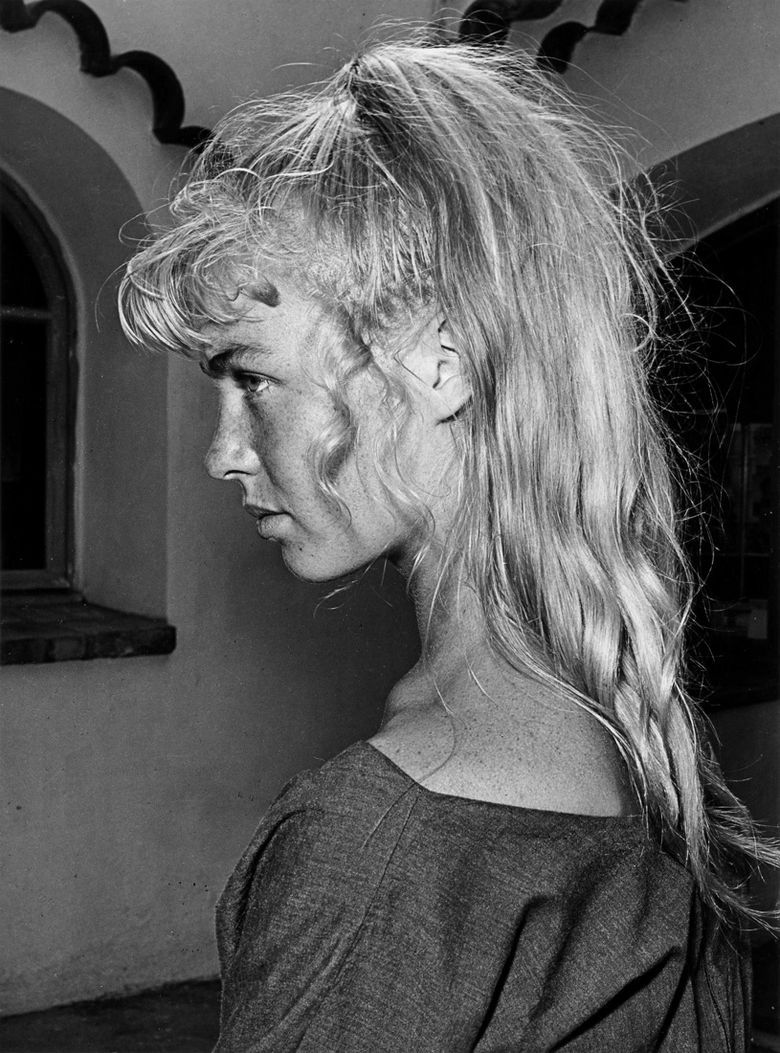 | 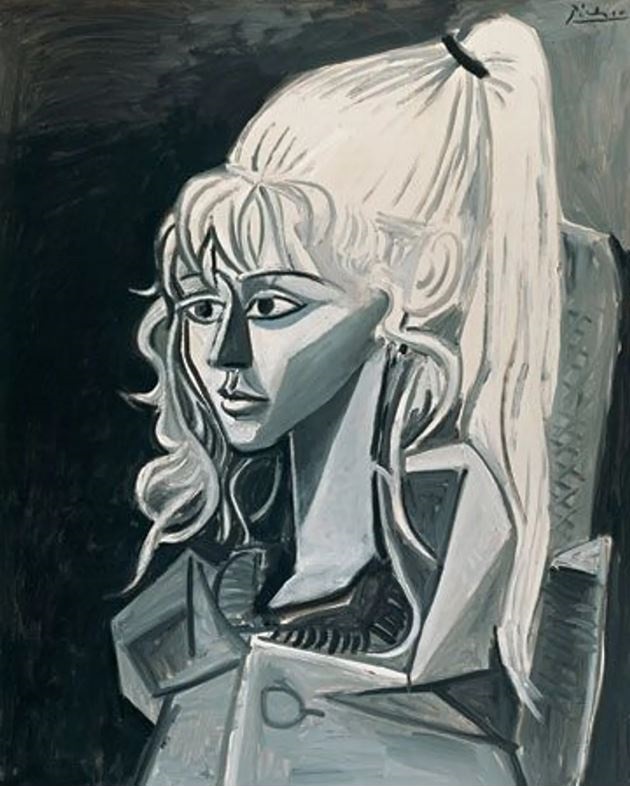 |  | 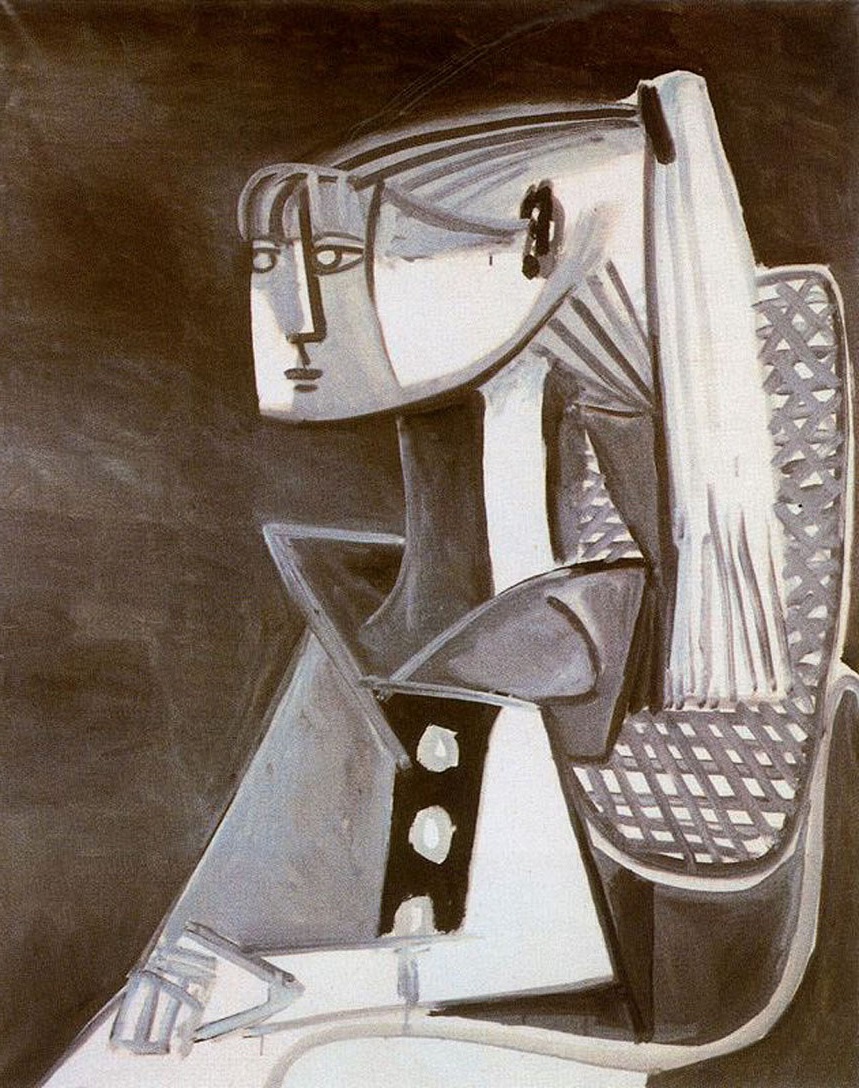 |
Photo of Sylvette David and a selection of Picassos Sylvette impressions
Even the grand masters learn the workmanship of painting by copying much-admired ideals. Can't AI do the same? Of course, image processing is an essential capability of Artificial Intelligence! AI is able to study paintings – well, let's say the way of placing paint on canvas – and then apply what it has learned.
Five young people from the École polytechnique fédérale de Lausanne (Switzerland), the Université catholique de Louvain (Belgium) and the University of Tübingen (Germany) utilize an AI algorithm from Oxford University to analyze image styles. The Oxford “Visual Geometry Group” network is a “deep neural network” with 19 layers. And it is a “convolutional” network, meaning that the only task of some layers is to recognize edges, corners and closed forms. “Convolutional neural networks” are based on an article, published by the computer scientist and cognitive psychologist Prof. Geoffrey Hinton from Toronto University in 2012.
Actually, we don't even know yet what an ordinary “neural network” is and how it works. We have to clarify that in our blog soon. For now, our ignorance doesn’t prevent us from using the image analyzing AI of the five guys from Lausanne/Louvain/Tübingen to produce our own images. To do this, we upload a photo of our partner, our child, or whomever to www.deepart.io and choose an image style. Often, the visitor traffic on deepart.io is quite heavy, that’s why we have to wait up to half an hour sometimes. But then, finally, we download the AI’s painting result, print it on paper, may frame it and give it away.
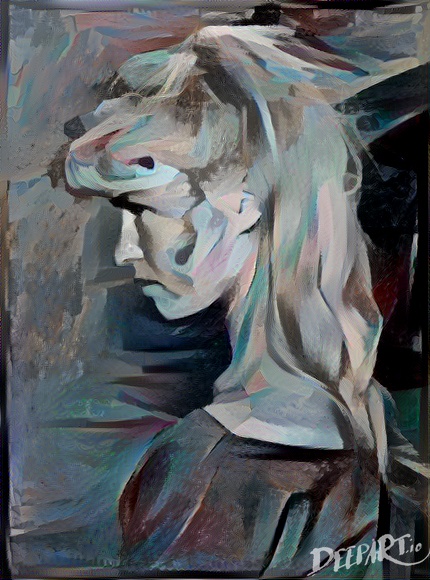 | 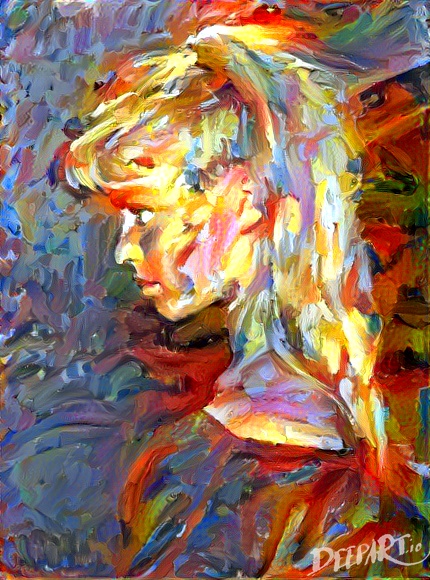 | 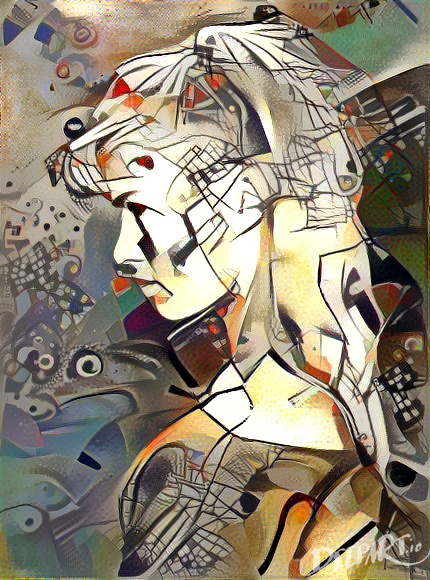 | 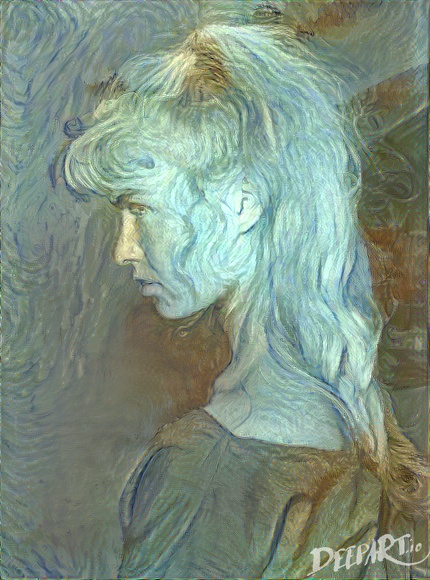 |
Some deepart.io interpretations of the Sylvette David photo.
Low-resolution images made by deepart.io are for free, HD images cost €19, Ultra HD images cost €59, and a printed poster costs €69. Moderate prices compared to the €380,000 for which Christie's New York auctioned “Edmond de Belamy” in 2018, an AI painting by the collective “Obvious - AI & Art”. This Paris-based group of people also explores the connections between AI and arts. Are you tempted to google “Edmond de Belamy” now? Please, don't be too disappointed by the blurred, vague portrait of an old-fashioned gentleman!
Now, what do you let your AI analyze on your industrial PC from omtec.de? Pictures, literature, music? The next blog will be released after Easter, so there’s time for you to engage in AI and arts!
